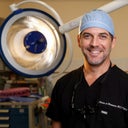I have keloids on my back, chest and cheek. They all between 5 and 10years old they are large and raised.And are still continuing to get larger. They are very painful and itch. I have had them excised, injected with kenalog and had radiation therapy.And new scars appear daily. Is there some type of treatment that would stop new keloids from appearing? Is there something that can be rubbed on the existing keloids to help with itching and pain?
Answers (4)
From board-certified doctors and trusted medical professionals
Dr. Raffy Karamanoukian, MD, FACS

Dr. Raffy Karamanoukian, MD, FACS
Board Certified Plastic Surgeon
Answer
Dr. Kevin Brenner, MD, FACS

Dr. Kevin Brenner, MD, FACS
Board Certified Plastic Surgeon
Answer
Dr. Steven Turkeltaub, MD
Dr. Steven Turkeltaub, MD
Board Certified Plastic Surgeon
Answer
Dr. Sam Lam, MD, FACS, FISHRS
Dr. Sam Lam, MD, FACS, FISHRS
Board Certified Facial Plastic Surgeon
Answer
More Scar Removal Questions
See all Scar Removal Q&AWE SEND PRETTY
EMAILS
What’s trending? Who’s turning heads? Which TikTok myths need busting? We’ve got you. No fluff, no gatekeeping—just real talk. Get our free, unfiltered newsletter.